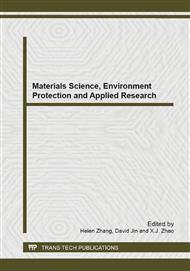p.163
p.167
p.171
p.175
p.179
p.183
p.187
p.191
p.195
Study on Sulfur Retention Characteristics for Bio-Briquette
Abstract:
The sulfur retention mechanism of bio-briquette combustion is analyzed in the paper. The experimental research is carried out on the influence factors of biomass content, with inclusion of combustion temperature, Ca/S ratio, sulfur retention additives. The results indicate that when Ca/S ratio is equal to 2 and the combustion temperature is 850°C,the sulfur retention efficiency of low sulfur bio-briquette exceeds 60%.The rising trend becomes slow when Ca/S ratio is higher than 2.The sulfur retention effect will be reduced over 950°C. Using Fe2O3 as sulfur retention additive can significantly improve the sulfur retention capability of bio-briquette.
Info:
Periodical:
Pages:
179-182
Citation:
Online since:
March 2014
Authors:
Keywords:
Price:
Сopyright:
© 2014 Trans Tech Publications Ltd. All Rights Reserved
Share:
Citation:


